The National Theatre (Narodni Divadlo) may not be as world-famous as Prague Castle or Charles Bridge, but it is equally important for Czech national identity. It was opened in 1881, during the times when the Czechs were trying to strengthen and revive their language and culture while being part of the German-speaking Austrian Empire (this period is known as the Czech National Revival – Narodni Obrozeni).
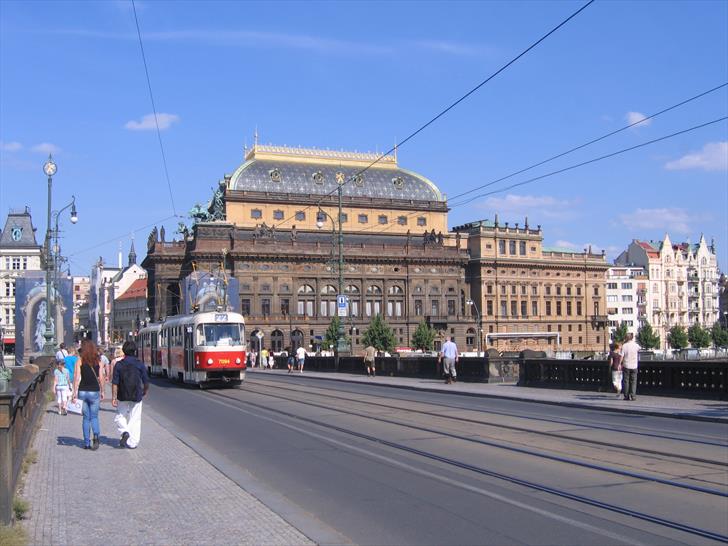
The National Theatre’s story became even more striking when it was destroyed by fire just two months after its opening. This raised a strong wave of national enthusiasm among the wide public and a within 47 days new funds had been collected for reconstruction. The theatre reopened in 1883.
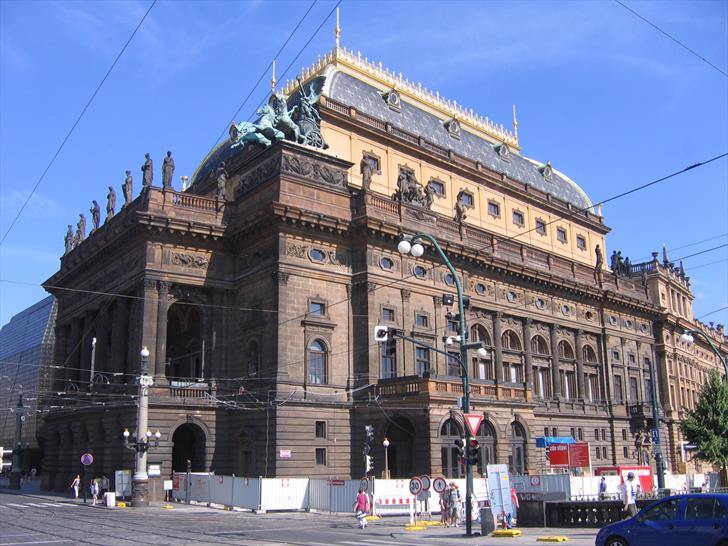
Looking up when standing near the corner of National Theatre:
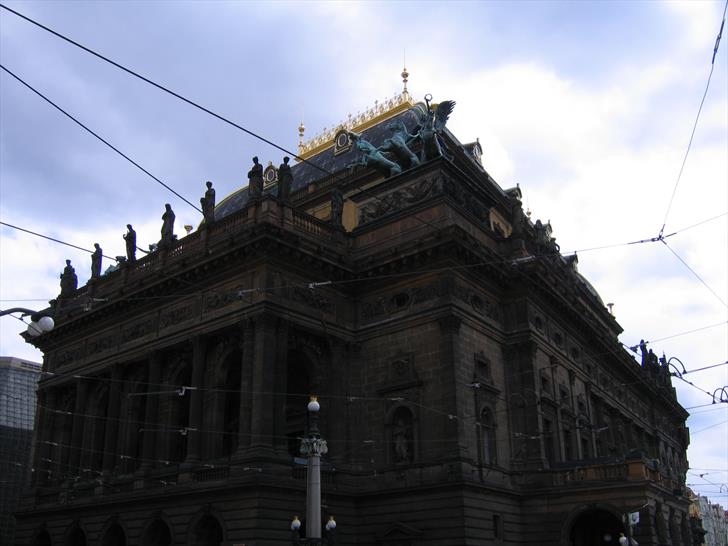
On the top at the corner you can see a three-horse chariot (triga). There are more sculptures and other decorations along the edge of the roof.
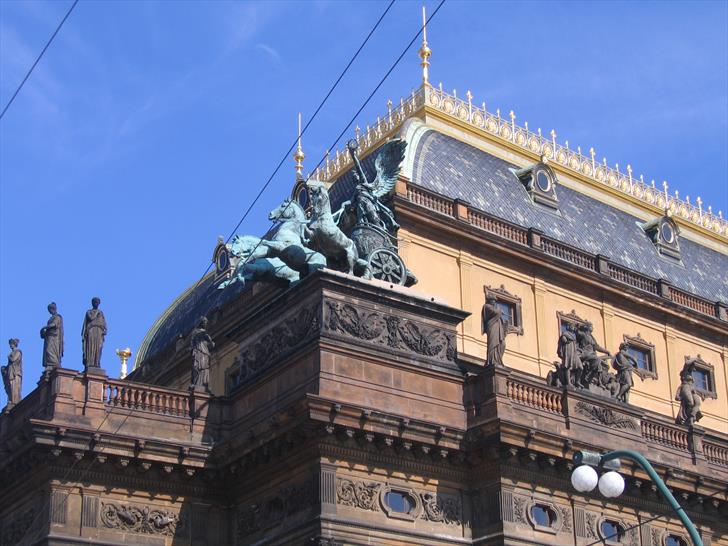
Nowadays the National Theatre hosts three ensembles – drama, opera and ballet. For most Czechs, especially those living in distant parts of the country, seeing a performance at the National Theatre in Prague is a special occasion.
The next picture is National Theatre main entrance from Narodni Trida (National Avenue):
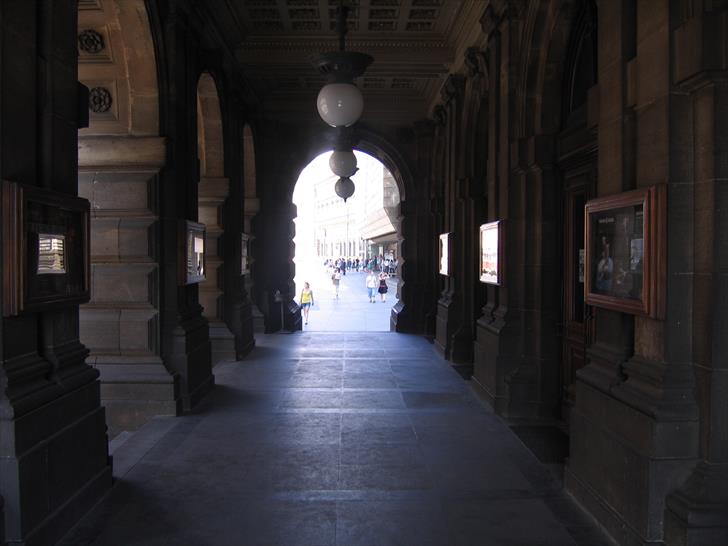
Laterna Magika
Adjacent to the historical National Theatre building there is another theatre building – the modern looking Laterna Magika (Magic Lantern), established in 1958. It hosts a wide range of performances, including black theatre, dance and various other styles trying to merge film and theatre. Because language is not a barrier in these performances, Laterna Magika is quite popular with tourists.
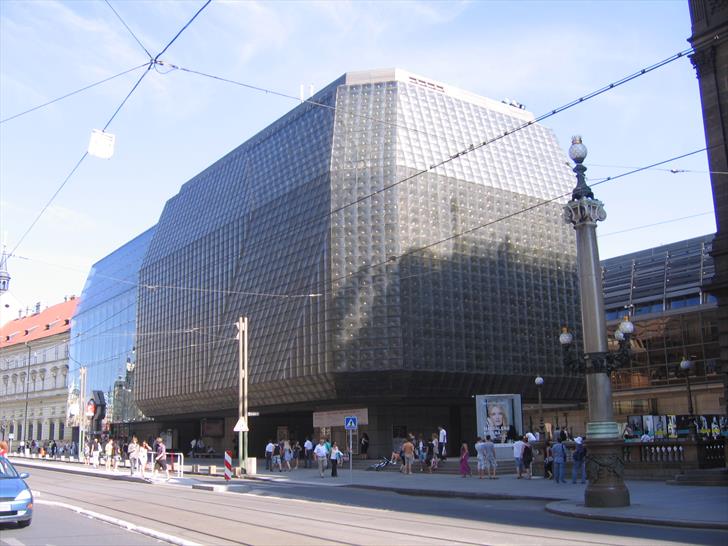
National Theatre from Charles Bridge
The characteristic National Theatre building is a prominent feature of Prague’s riverside in this part of the city. You can see it from many places, but one of the best views is from Charles Bridge, which most tourists visit anyway. If you look upstream the river, you will find the National Theatre on the left side of the river, immediately next to the nearest bridge (Most Legii – Legion Bridge – the one divided in half by an island). This is the view:
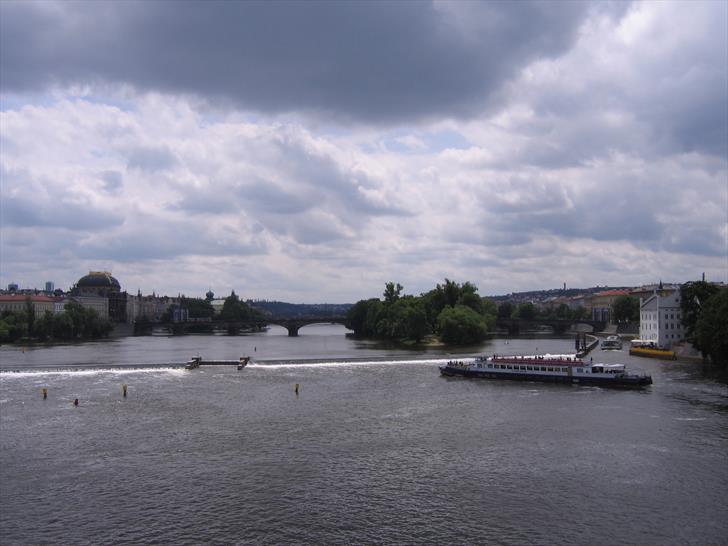
National Theatre from Charles Bridge, zoomed:
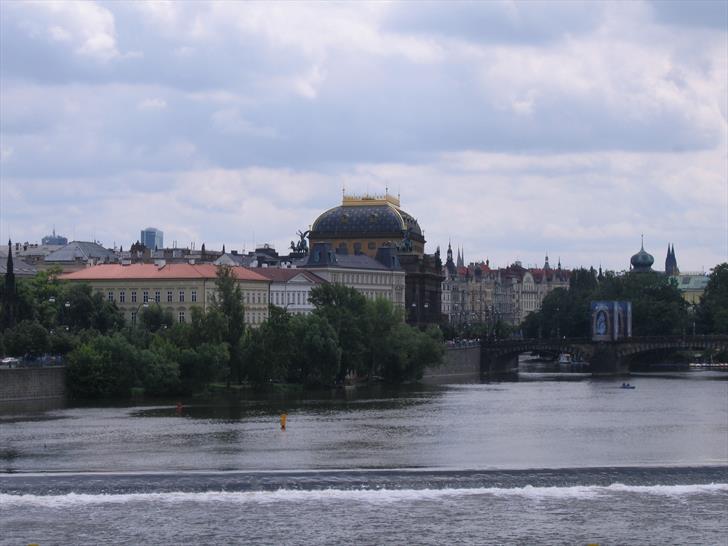
The same view in winter:
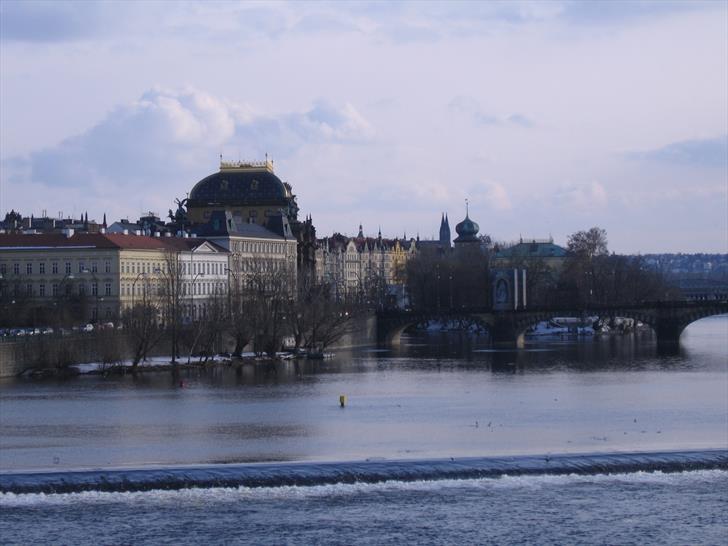
And with snow on the roofs:
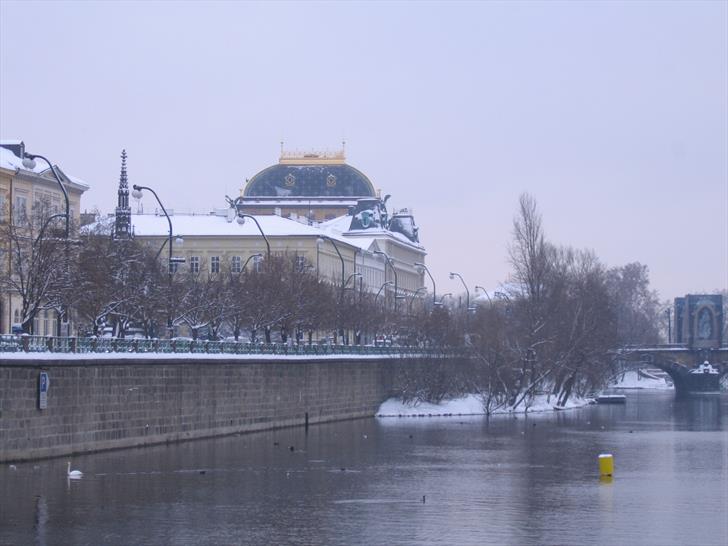
Smetana Embankment
The embankment between Charles Bridge and National Theatre is named Smetanovo Nabrezi (Smetana Embankment), after the famour Czech composer Bedrich Smetana, whose opera Libuse was played as National Theatre’s first performance on 11 June 1881. (Libuse is a prominent Czech mythical character – according to a legend she prophesied and founded the city of Prague.)
The following photo shows Smetana Embankment with National Theatre on the far end. The big building in front is Bedrich Smetana Museum. There is Smetana’s statue in front of the museum, next to the weir, but it’s too small to be recognizable on this photo.
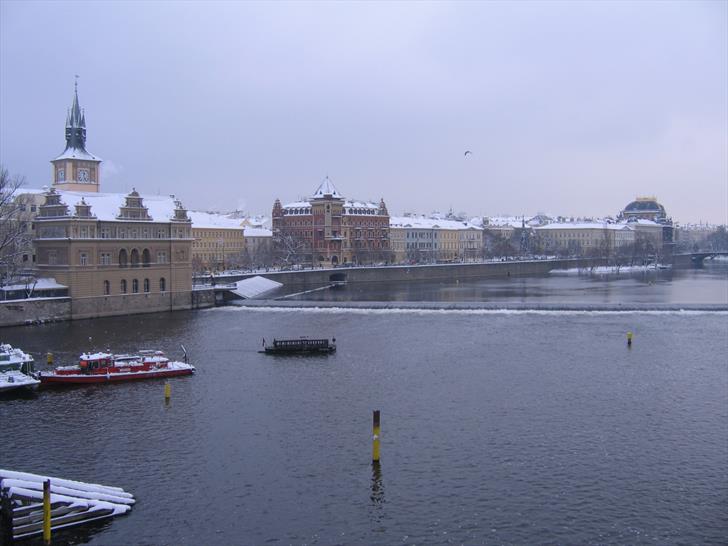
The last photo is Smetana’s statue in front of his museum, also covered with snow. You can see a small part of Charles Bridge on the left:
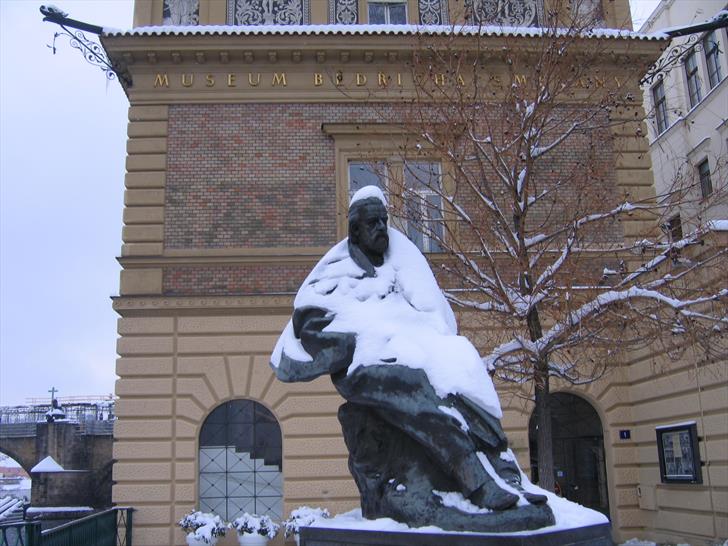
Getting to National Theatre
The nearest metro station is Narodni Trida (line B), about 5 minutes walk from the National Theatre. There is a tram stop in front of the theatre, named Narodni Divadlo, with frequent tram services from Narodni Trida metro station and from the other side of the river. If you want to come from the Charles Bridge side, the nearest metro station is Staromestska (Old Town Station; line A) – you will have to walk along Smetana Embankment to get to the National Theatre.
